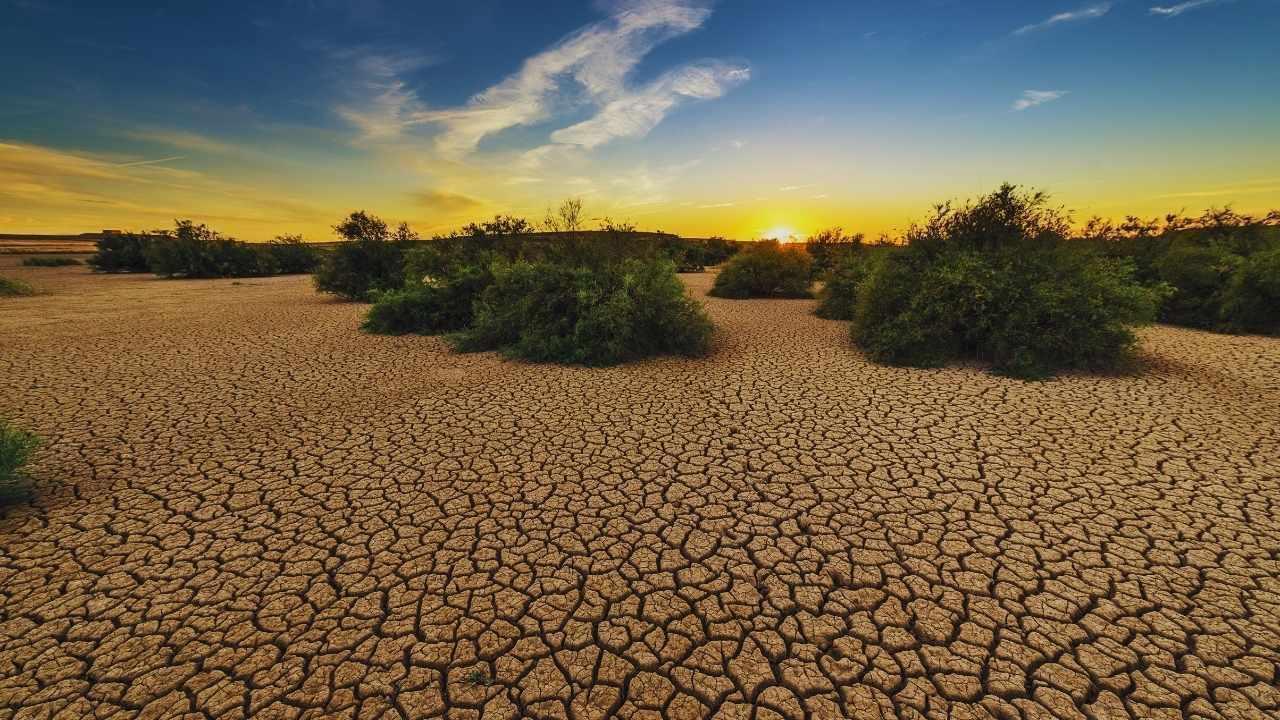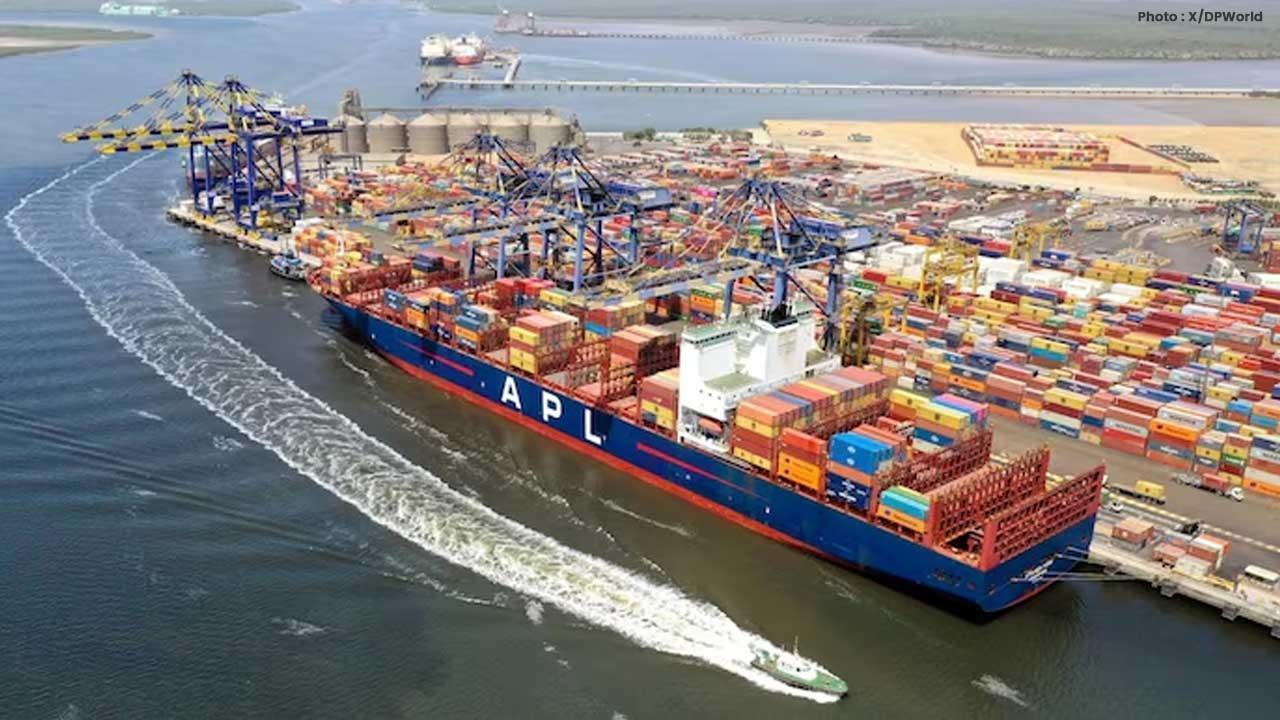
Join 10k+ people to get notified about new posts, news and tips.
Do not worry we don't spam!

Post by : Anis Farhan
Water scarcity is becoming a defining challenge for many regions across the globe, particularly in drought-prone areas. Climate change, population growth, and unsustainable water use have intensified shortages, affecting agriculture, industry, and daily life.
In many parts of India, Africa, and the Middle East, communities face severe constraints on water availability. Wells and rivers dry up, groundwater levels drop, and urban demand exceeds supply, resulting in frequent water rationing. The scarcity has social, economic, and environmental consequences, threatening livelihoods, health, and food security.
Addressing water scarcity requires both immediate relief measures and long-term innovative solutions. Communities, governments, and private enterprises are exploring technologies and strategies that conserve water, enhance distribution efficiency, and ensure sustainable access for future generations.
Water scarcity arises from a combination of natural and human factors:
Climate Variability: Erratic rainfall, extended dry seasons, and extreme weather events reduce water availability.
Population Growth: Increasing urban populations strain municipal water supply systems.
Overexploitation: Excessive extraction of groundwater and river water for agriculture and industry depletes sources faster than replenishment.
Pollution: Contamination of water bodies reduces the usable water supply.
Inefficient Usage: Traditional irrigation and water distribution methods lead to significant wastage.
Understanding these causes is critical for designing effective interventions that target both supply and demand sides of water management.
Rainwater harvesting is one of the most accessible and effective strategies for drought-prone regions. It involves collecting and storing rainwater from rooftops, roads, and other surfaces for household, agricultural, or industrial use.
Communities are increasingly adopting rooftop collection systems that channel rainwater into storage tanks or underground reservoirs. Large-scale projects capture runoff in ponds and lakes, replenishing groundwater levels.
Beyond providing supplemental water, rainwater harvesting reduces dependence on overused rivers and wells. It is particularly valuable in urban areas where impervious surfaces prevent natural absorption, and in rural areas where monsoon rains are the primary water source.
For coastal drought-prone regions, desalination offers a reliable solution by converting seawater into potable water. Advances in reverse osmosis and solar-powered desalination systems have made this technology more energy-efficient and cost-effective.
Water recycling, including greywater reuse, is another critical approach. Treated wastewater from households and industries can be safely repurposed for irrigation, cleaning, and even drinking in some cases. Cities adopting recycling initiatives reduce freshwater demand and minimize environmental pollution.
Combined, desalination and recycling technologies provide supplementary sources that bolster resilience against prolonged dry spells.
Agriculture is the largest consumer of freshwater in drought-prone regions, making efficient irrigation a priority. Traditional flood irrigation wastes water, whereas modern techniques conserve significant volumes.
Drip irrigation delivers water directly to plant roots, minimizing evaporation and runoff. Automated sprinkler systems adjust water flow based on soil moisture and weather forecasts. Sensor-based irrigation monitors real-time soil conditions, ensuring crops receive optimal water levels.
These techniques not only save water but also improve crop yields, reduce costs, and enhance food security. Government programs and NGOs are promoting these solutions to empower farmers and build sustainable agricultural practices.
Groundwater depletion is a pressing concern in many arid areas. Artificial recharge projects, such as percolation ponds, recharge wells, and check dams, enhance aquifer replenishment.
Communities are encouraged to adopt water-conserving practices, including limiting extraction, reducing leaks, and using water-efficient appliances. Policies that regulate groundwater usage and promote recharge projects are proving effective in stabilizing water levels.
Education and community involvement are key, as sustainable groundwater management depends on coordinated efforts between individuals, local authorities, and governments.
Many successful interventions are driven by community participation. Local residents, NGOs, and social enterprises collaborate to implement water conservation projects tailored to regional conditions.
Village-level committees oversee rainwater harvesting, check dam maintenance, and sustainable agricultural practices. Public awareness campaigns promote water-saving habits, such as reduced household consumption, careful irrigation, and protection of local water bodies.
Community-led efforts not only address water scarcity but also foster collective ownership, resilience, and long-term sustainability. Empowering local populations ensures that solutions are maintained and adapted over time.
Technological innovation plays a vital role in addressing water scarcity. Remote sensing, GIS mapping, and satellite imagery help monitor water resources, predict drought patterns, and optimize distribution.
Smart sensors and IoT devices track water quality, leakage, and consumption patterns. Data-driven insights enable governments, utilities, and communities to implement efficient policies and allocate resources strategically.
Mobile apps provide farmers and households with real-time weather updates, irrigation advice, and alerts for water shortages. Leveraging technology enhances decision-making, reduces waste, and ensures that scarce water resources are used efficiently.
Effective governance is critical for addressing water scarcity. Governments are introducing policies to regulate water use, incentivize conservation, and invest in infrastructure.
Subsidies for drip irrigation, incentives for rainwater harvesting, and investment in desalination plants help communities manage water sustainably. Integrated water resource management (IWRM) frameworks promote coordination among sectors and regions, ensuring equitable distribution and efficient usage.
Regulations on industrial water use, pollution control, and groundwater extraction help protect existing resources. Transparent policies, coupled with monitoring and enforcement, are essential to ensure long-term sustainability.
Water scarcity has profound economic and social consequences. Reduced agricultural productivity affects farmer incomes, food prices, and rural livelihoods. Industries dependent on water may face operational challenges, impacting employment and economic growth.
Socially, scarcity can lead to conflicts over access, migration, and health issues due to insufficient clean water. Implementing innovative solutions mitigates these impacts, ensuring communities can thrive even in water-stressed environments.
Investment in water infrastructure, conservation technologies, and community engagement generates jobs, improves living conditions, and strengthens resilience against climate variability.
Countries facing chronic drought have implemented innovative measures worth emulating. Israel’s use of drip irrigation, water recycling, and desalination provides a model for arid regions worldwide. Australia’s water pricing, conservation campaigns, and community participation programs demonstrate effective demand management.
In India, states like Rajasthan and Maharashtra have revived traditional water harvesting structures, combining heritage techniques with modern technology. Learning from global experiences and adapting them locally ensures that solutions are both practical and culturally acceptable.
The future of water management in drought-prone regions depends on innovation, technology, and cooperation. Climate change projections suggest that water scarcity will intensify, making proactive measures essential.
Emerging solutions such as atmospheric water generators, advanced filtration systems, AI-based predictive models, and smart distribution networks hold promise. Investments in sustainable agriculture, urban water recycling, and desalination can further enhance resilience.
Public-private partnerships, international collaborations, and community-led initiatives will be critical in scaling these solutions. By combining technological innovation with behavioral change and governance support, drought-prone regions can secure water access for current and future generations.
Water scarcity in drought-prone regions is a complex, multifaceted challenge. Addressing it requires integrated approaches combining technology, policy, community engagement, and sustainable practices.
Innovative solutions such as rainwater harvesting, desalination, smart irrigation, groundwater recharge, and data-driven monitoring offer practical pathways to mitigate scarcity. Community-led initiatives and responsible governance ensure that interventions are maintained and adapted over time.
By embracing innovation and cooperation, societies can build resilient water systems, protect livelihoods, and ensure that access to this vital resource remains secure. Water scarcity may be a pressing challenge, but it is also an opportunity to rethink, innovate, and create sustainable solutions that benefit generations to come.
This article is intended for informational and educational purposes only. Readers and policymakers should conduct further research and consult experts before implementing large-scale water management projects or technological interventions.










Mitchell Marsh Backs Aggressive Plan Ahead of India T20 Series
Australia captain Mitchell Marsh says his team will continue playing fearless cricket as they prepar

Smriti Mandhana Becomes World’s No.1 ODI Batter
India’s Smriti Mandhana rises to No.1 in ICC Women’s ODI rankings with a career-best rating of 828 a

Suryakumar Yadav Focuses on Team Spirit and Fielding Goals
India captain Suryakumar Yadav stresses teamwork, energy, and stronger fielding efforts ahead of the

Sherwood Leads Canucks to Overtime Win Against Oilers
Kiefer Sherwood scored twice, including an overtime winner, as Vancouver Canucks defeated Edmonton O

Freeman Leads Dodgers to 6-5 Thriller Over Blue Jays
Freddie Freeman’s 18th-inning walk-off homer gives the Dodgers a thrilling 6-5 win over the Blue Jay

Bayern Target Another Victory in German Cup Match
Bayern Munich look to continue their perfect start to the season with a German Cup clash against Col